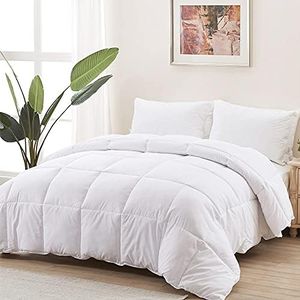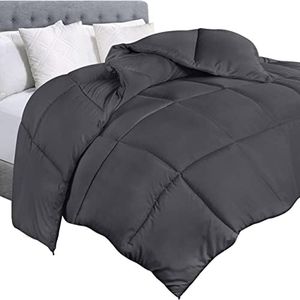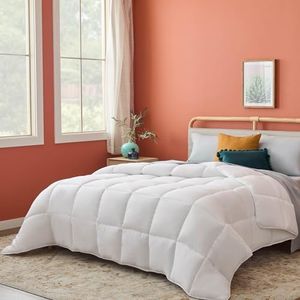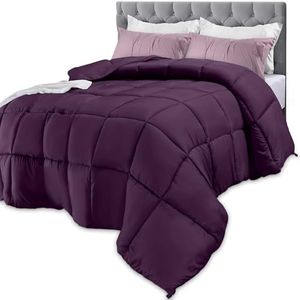We Use CookiesWe use cookies to enhance the security, performance,
functionality and for analytical and promotional activities. By continuing to browse this site you
are agreeing to our privacy policy
10 Best Down Alternative Comforters
From leading brands and best sellers available on the web.Buying Guide for the Best Down Alternative Comforters
Choosing the right down-alternative comforter is about finding the best mix of comfort, warmth, and maintenance for your needs. Down-alternative comforters are made with synthetic fibers that mimic the feel of natural down but are often hypoallergenic and easier to care for. When picking one, it helps to understand how the main features impact warmth, weight, breathability, and durability so you can match them to your sleeping habits, climate, and personal preferences.Fill MaterialFill material refers to what is inside the comforter to make it fluffy and warm—typically, this is a synthetic fiber like polyester rather than natural down. This spec is important because it affects softness, breathability, and allergy-friendliness. Some fibers feel closer to real down, while others can be heavier or warmer. If you tend to have allergies or want something that is easy to wash frequently, look for hypoallergenic polyester fills. If you prioritize trying to get as close as possible to the feel of real down, check for microfibers or 'gel' fiber fills. Think about your priorities—if you want easy care and less risk of sneezing, a basic polyester fill works well, but for luxury and more real-down-like comfort, look for premium microfibers.
Fill Power / LoftFill power, often called loft in down-alternative comforters, measures how fluffy and insulating the comforter is. This impacts how warm and cozy it feels. Lower loft means a lighter, thinner comforter suitable for warm seasons or hot sleepers. Medium loft provides a balance for year-round use, while higher loft gives maximum warmth and is best for cold conditions or those who easily get cold at night. Consider your climate and how warm you like to sleep—if you live somewhere warm or sleep hot, go for a low to medium loft; for cold environments or if you like a cozy nest, pick a higher loft.
Shell MaterialShell material is the outer fabric of the comforter, typically made from cotton, microfiber, or sometimes blended fabrics. The shell affects both how the comforter feels against your skin and how breathable or durable it is. Cotton shells are soft and breathable, good for people who sleep hot or want natural fibers, while microfiber is usually smoother and more resistant to wrinkles and stains, making it easier to care for. If you want more breathability and a traditional feel, choose a cotton shell; for easy cleaning and a silky touch, microfiber is a solid choice.
WeightWeight refers to how heavy the comforter feels overall, which correlates to how much fill is inside. Some people love the cozy, 'hugged' feeling of a heavier comforter, while others prefer something lighter that is easy to move and doesn't feel stifling. Lightweight comforters are best for summer or for people who get warm at night; midweight options suit most people year-round; heavyweight comforters are best if you want maximum warmth or enjoy that weighted feeling. Think about your preference for sleep temperature and whether you move around a lot at night; match the weight to these needs.
ConstructionConstruction refers to how the comforter is stitched together, usually with methods like box-stitch, baffle box, or sewn-through. This impacts how the filling stays distributed. Box and baffle box constructions keep the fill evenly spread, preventing clumps and cold spots, while simple sewn-through can allow shifting over time but may be lighter and more affordable. If you want a comforter that stays fluffy and doesn’t need frequent fluffing, look for box or baffle-box stitching. For occasional or guest use, sewn-through might be sufficient.
Ease of CareEase of care is how simple it is to wash and dry your comforter. Most down-alternative comforters are machine washable, but some might require special handling, especially if they have delicate shells or high loft. If you need to wash your bedding frequently due to allergies or lifestyle, check that your comforter can go into a regular washer and dryer. For occasional cleaning, hand washing or spot cleaning may be okay. Always review the care label and match the cleaning needs to your lifestyle.















